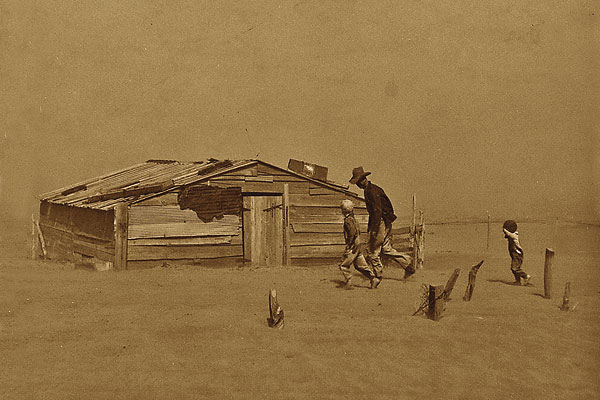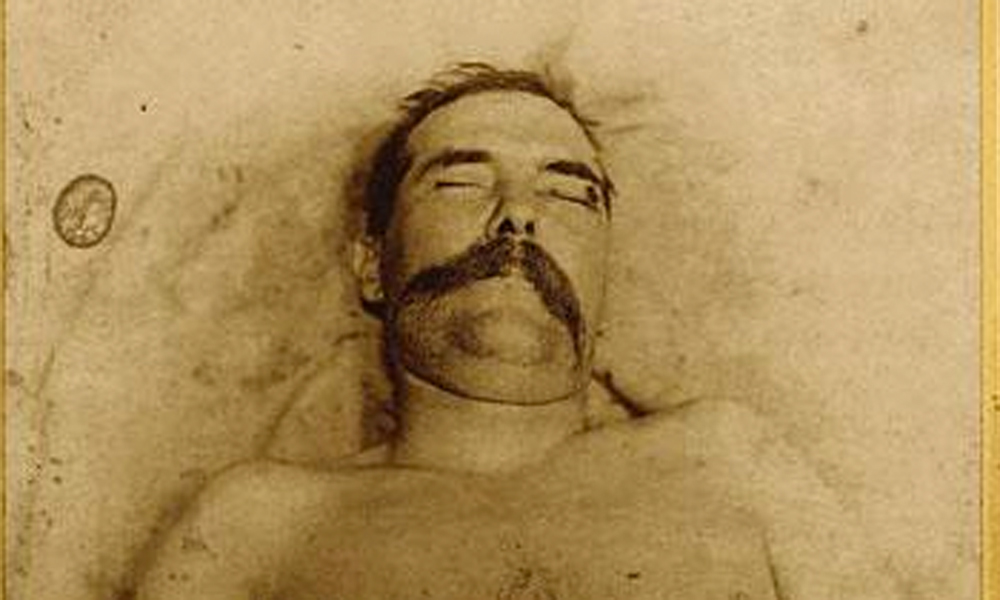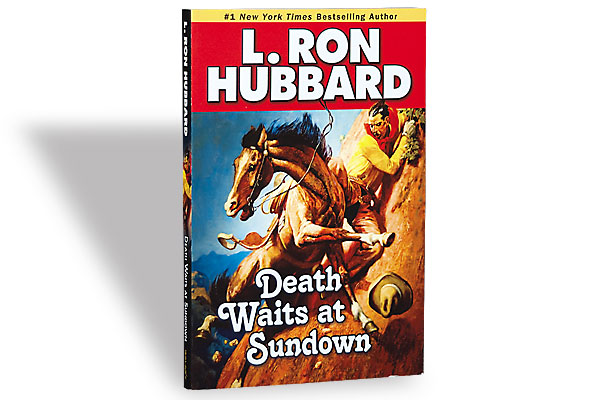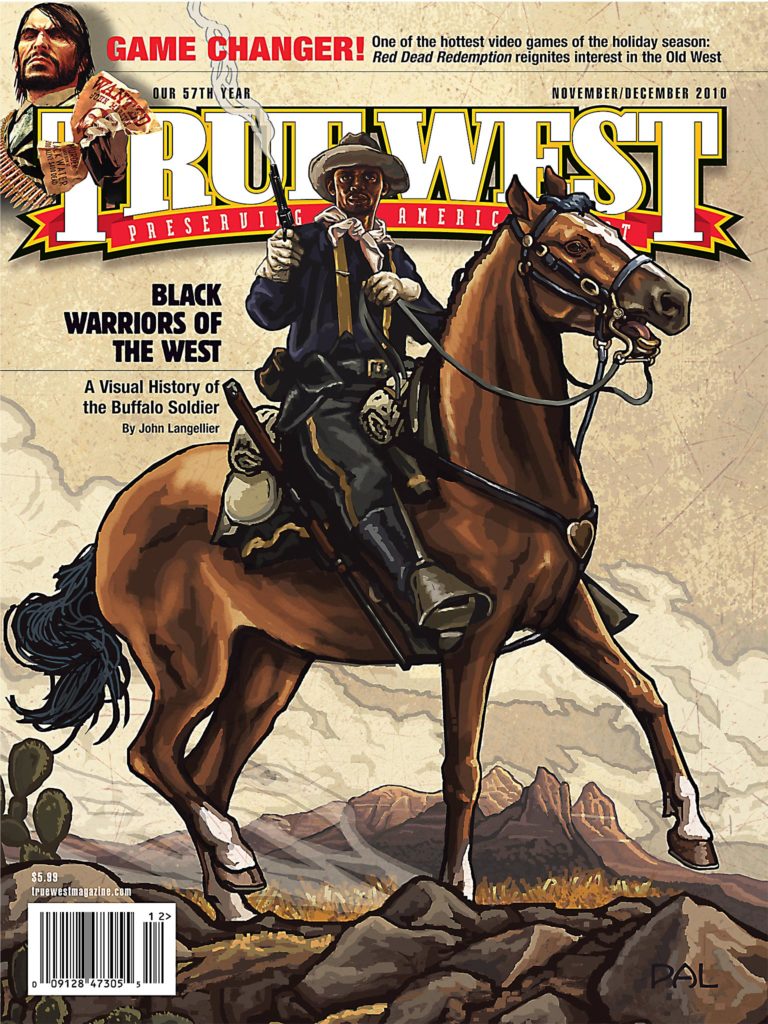
Dust storms undoubtedly inspired heroic resolve in some pioneers committed to the land, while causing madness, disease and disability in those less able to cope with this chaotic distuption of their lives.
The dust from such storms will vary in composition and particle size distribution, depending upon a host of variables. These include prevailing meteorological factors, such as temperature and humidity, along with wind speed and direction. Equally important are the amount and chemical characteristics of entrained (wind-borne) soil, where the former is partially determined by the amount of vegetation coverage.
Medically speaking, when entrained particles are less than 10 microns in diameter (about one-tenth the average diameter of a human hair), they can reach the deeper regions of the lung when inhaled. If these particles include a high concentration of crystalline silica that is common in the sand in prairie dust, they have the potential to cause a debilitating and sometimes fatal lung disease similar to silicosis found, among other places, in hard rock miners.
Larger dust particles that do not make it to the small airways can still cause inflammatory disease of the nasal passages (rhinitis), sinuses (sinusitis) and bronchial passages (bronchitis) in addition to causing asthma-like symptoms and effects.
Following recurrent exposure to dust over long periods or rarely, during a very high exposure episode, the very young and the very old are the most vulnerable to suffering these adverse effects. Such dust storms were not unusual in many parts of the Old West.
W.S. Chepil indicated that in Kansas, during the 40-year period beginning in 1854, the “most notable droughts and associated dust storms…of definite record… occurred in 1854-1860, 1864-1865, 1874, 1880 and 1890-1894.” In his July/August 1963 article in the Proceedings of the Soil Science Society of America, Chepil also cited the famous period of the “Dust Bowl” during the “Great Depression” that included the years from 1934-39.
Scientific data gathering on dust storms was lacking before 1874. James C. Malin noted this omission of data in his comprehensive discussion of dust storms during 1850-1900, published in the May, August and November 1946 issues of the Kansas State Historical Society’s Quarterly Journal. In 1874, the U.S. weather service began systematizing new data on prairie fires (a source of dust) and droughts. The weather service finally began reporting on sand and dust storms in June 1879.
Some of the potential adverse health effects of Old West dust storms can be gleaned from a description published in the January 31, 1855, Kansas Free State in Lawrence: “The strong south winds that we experience here are our greatest annoyance. They frequently last for several days, and are loaded with the black dust from the burnt prairie, which penetrates every corner of our houses, and makes every one who is exposed to it as sooty as a collier [coal miner].”
The October 9, 1858, Kansas Herald in Leavenworth complained: “It [the dust] fills our eyes, ears, nose and mouth;… Save us from high winds and dusty streets.”
Malin also recounted an 1886 Austin, Texas, report: “The dust had a peculiar effect on the lungs and throat, causing irritation and hoarseness.”
Some of the Old West storms described by Malin appear to have been as severe as many of the storms that occurred in the 1930s during the period of “Dust Bowl” on the Great Plains.
In his acclaimed 2006 book The Worst Hard Time, Pulitzer Prize winner Timothy Egan described the dreaded complications of dust storm exposure during the 1930s: “In the High Plains, doctors were seeing a condition similar to silicosis [scarring lung disease caused by very fine, respirable sand particles] after just three years of storms.
“Sinusitis, laryngitis, bronchitis—a trio of painful breathing and throat ailments—were common. By the mid-1930s, a fourth condition, dust pneumonia, was rampant. It was one of the biggest killers…. They [doctors] saw a pattern of symptoms: children, infants, or the elderly with coughing jags and body aches, particularly chest pains, and shortness of breath. Many had nausea and could not hold food down. Within days of diagnosis, some would die…. Desperate parents pleaded with the government to help their families escape. Their children were being strangled by dust.”
Egan continued: “People were stuffed with prairie topsoil. In a report delivered to the Southern Medical Association, Dr. John H. Blue of Guymon, Oklahoma, said he treated fifty six patients for dust pneumonia and all of them showed signs of silicosis;… He was blunt. The doctor looked inside an otherwise healthy young farm hand, a man in his early twenties, and told him what he saw. ‘You are filled with dirt,’ the doctor said. The young man died within a day.”
Animals were not spared the deadly effects of the dust. Egan noted that “dead cattle, some with their eyes frozen and glazed over with sand, were pinned in grisly repose, against fences holding tumbleweeds and dirt.” He added that one autopsy on a dead cow revealed the “stomach packed so solidly with dust that it blocked food from getting any further…animals dead from starvation caused by internal suffocation.”
Did the settlers in the Old West suffer from the same deadly consequences as those caused by the 1930s dust exposure described by Egan?
Uncovered topsoil and dust, entrained by the winds, along with the smoke from fires were the major sources of very fine inhalable and choking dust during both periods. Wind-borne topsoil, however, was a far less important factor in the Old West storms because the ancient prairie, covered with thick grass, had not yet been over-plowed by the thousands of “nesters” and farmers who eventually settled the vast Great Plains.
Although the records are sparse, my medical opinion is that some, though fewer, in the Old West suffered and died in the same manner as their descendants in the 1930s.
Beyond this depressing conclusion, nothing can be really added to Egan’s masterful account of the often-catastrophic effects of prairie dust on all living creatures. His narrative is the embodiment of one of the true “fear on the frontier” nightmares in the Old West, and one that can revisit us, even today.






